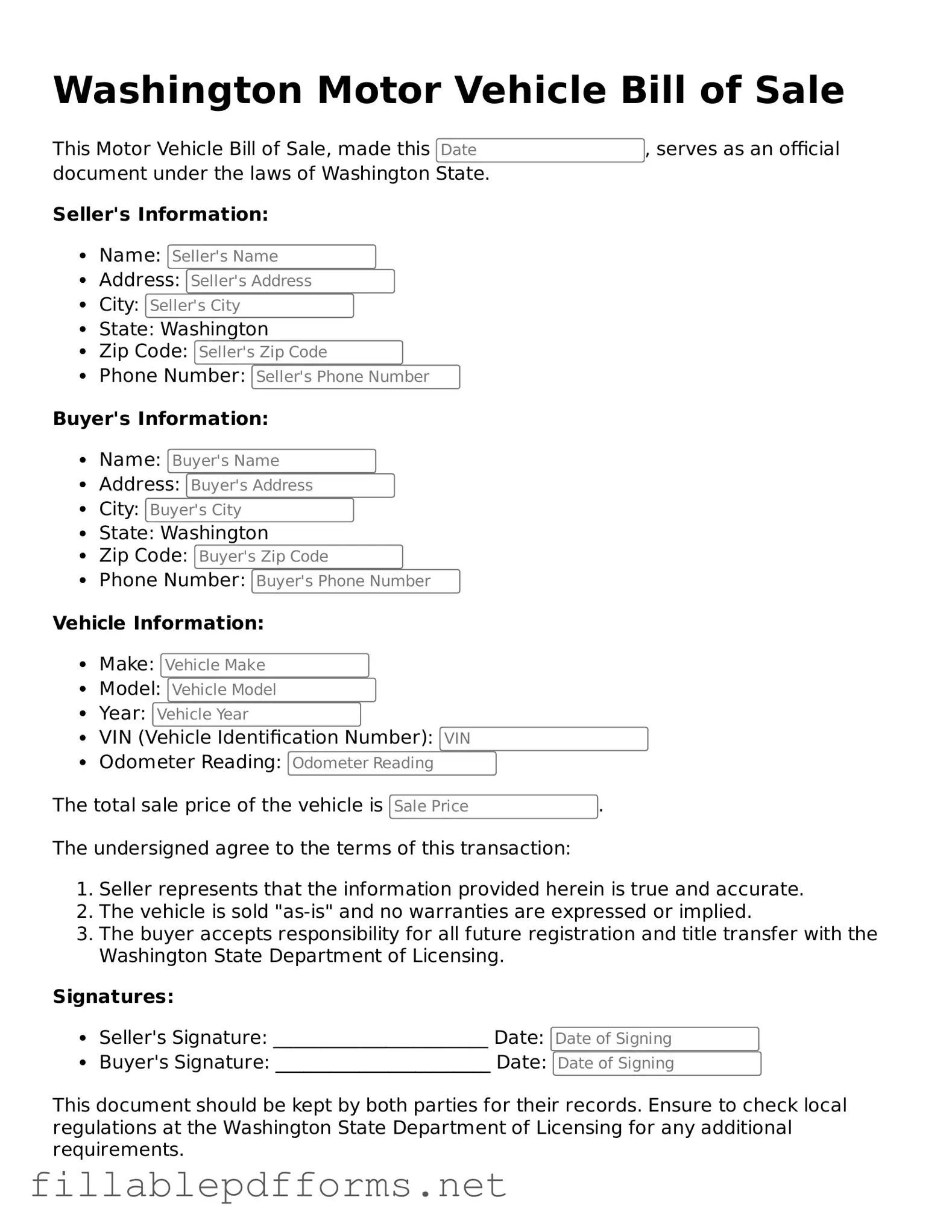Attorney-Verified Motor Vehicle Bill of Sale Form for Washington State
The Washington Motor Vehicle Bill of Sale form is a legal document that records the transfer of ownership of a vehicle from one party to another. This form serves as proof of the transaction and outlines key details such as the vehicle's identification number, sale price, and the names of both the buyer and seller. Understanding this form is essential for ensuring a smooth and legally compliant vehicle transfer in Washington State.
Launch Editor Here
